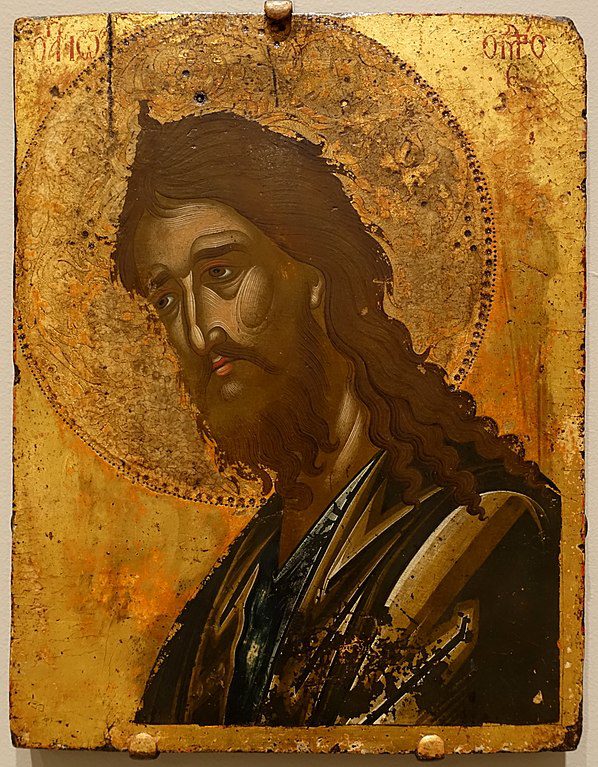
The brilliance of gold leaf has captivated artists and audiences for centuries. Its use in Byzantine and Gothic art is a testament to the incredible craftsmanship of those eras. These artistic traditions showcased an unparalleled ability to convey spiritual and regal significance through the careful application of gold leaf. This shimmering material not only enhanced the aesthetic appeal of artwork but also infused it with deeper meaning. Let’s dive into the fascinating history, techniques, and lasting influence of gold leaf in Byzantine and Gothic art.
The Historical Roots of Gold Leaf in Byzantine Art
The Byzantine Empire was the cradle of gold leaf artistry, with its use dating back to the early 4th century. Religious art was particularly significant during this period, and gold leaf was often employed to depict holy figures and divine scenes. The shimmering quality of gold symbolized the heavenly light, emphasizing the divine nature of the subjects portrayed.
Artists carefully applied thin sheets of gold leaf to religious icons, frescoes, and mosaics. In doing so, they achieved a glow that seemed to radiate from the artwork itself. The reflective nature of gold created a feeling of otherworldliness, inviting viewers into a sacred space. This technique became a defining characteristic of Byzantine religious art.
According to art historian Judith Herrin, “Byzantine artists used gold not just for its beauty, but to create a connection between the material world and the spiritual realm.” This desire to blend the earthly with the divine was central to the Byzantine aesthetic.
Gold leaf was also used in manuscript illuminations, adding prestige and importance to the sacred texts. The meticulous application of gold leaf to the pages of religious manuscripts elevated the status of both the artist and the artwork itself.
The Techniques Behind Gold Leaf Application in Byzantine Art
Byzantine artists developed a highly specialized technique for applying gold leaf, known as gilding. This process required immense skill and patience, as it involved applying ultra-thin sheets of gold to various surfaces. The gold leaf was so thin that it could easily tear or crumble, making the application a delicate task.
First, artists prepared the surface by applying a layer of clay mixed with glue, called bole. Once the bole dried, the artist carefully laid the gold leaf over it. To ensure the gold adhered smoothly, they used a soft brush to gently press it into place.
Afterward, burnishing tools, often made from agate stone, were used to polish the gold leaf, creating a smooth, reflective surface. This step was crucial for achieving the desired luminous effect. The smoother the surface, the more the gold would reflect light, adding to the divine appearance of the artwork.
This method was primarily used for religious icons and altarpieces. The end result was nothing short of mesmerizing—iconic images bathed in a heavenly glow that felt both tangible and ethereal.
Gothic Art’s Adoption and Evolution of Gold Leaf Techniques
Byzantine influences eventually spread across Europe, particularly during the transition from the Romanesque to the Gothic period. Gothic art flourished between the 12th and 15th centuries, and it continued the tradition of using gold leaf, particularly in religious art.
Gothic artists, however, took gold leaf application to new heights. While Byzantine art focused on religious icons and mosaics, Gothic artists incorporated gold leaf into large-scale altarpieces, panel paintings, and intricate stained glass windows. These works adorned cathedrals and churches, turning them into places of awe-inspiring splendor.
One key development in Gothic art was the use of gold leaf in combination with bold, vibrant colors. This technique enhanced the contrast between the shimmering gold and the richly pigmented figures, further emphasizing the spiritual themes of the artwork. The use of gold leaf during this period was not limited to paintings and sculptures; it also featured in architecture, notably in the embellishment of intricate details within churches and cathedrals.
The Gothic period saw a shift in the depiction of religious figures, with more emphasis on emotion and naturalism. Gold leaf was still used to highlight the divine, but it was also employed to elevate the human experience, capturing the connection between man and the divine.
Symbolism of Gold in Byzantine and Gothic Art
Gold has always held a powerful symbolic meaning, particularly in religious contexts. In Byzantine and Gothic art, the use of gold leaf symbolized purity, divinity, and eternal light. These qualities aligned perfectly with the themes of Christian art, where the depiction of Christ, the Virgin Mary, and the saints often involved an element of the divine.
Byzantine artists used gold leaf to create a direct visual link between the earthly and heavenly realms. In icons, for example, Christ and other holy figures were often set against a golden background, emphasizing their otherworldly status. The background wasn’t meant to represent an actual place but rather the glory of heaven itself.
Similarly, in Gothic art, gold leaf continued to symbolize divine radiance. When applied to religious figures, it elevated them beyond the ordinary. The use of gold in halos, crowns, and robes indicated a connection to the spiritual world, drawing attention to the figure’s sanctity.
Moreover, gold was associated with wealth and power. Its inclusion in religious artwork not only symbolized spiritual importance but also conveyed the influence of the Church. Churches adorned with gold-leafed art demonstrated the wealth and authority of religious institutions during the medieval period.
Challenges Faced by Artists Working with Gold Leaf
Despite its beauty and symbolism, working with gold leaf posed several challenges. The material itself was expensive, making it a luxury only afforded by wealthy patrons or the Church. Artists needed to be highly skilled, as even a small mistake could ruin the entire artwork.
Another challenge was the fragility of gold leaf. Since it was applied in such thin sheets, it was prone to damage if not handled with extreme care. Artists had to work in controlled environments, free from drafts and moisture, to ensure the gold adhered properly. A single breeze could cause the delicate leaf to crumble.
Additionally, maintaining the brilliance of gold leaf required careful preservation techniques. Over time, exposure to air, dust, and humidity could dull the gold’s shine. Many historical works featuring gold leaf have undergone restoration to restore their original brilliance.
The Legacy of Gold Leaf in Modern Art
While gold leaf is often associated with Byzantine and Gothic art, its influence continues to this day. Modern artists still use gold leaf to convey a sense of luxury, spirituality, or historical reference. Its application is no longer limited to religious or royal contexts, as artists explore its use in contemporary works, blending it with modern materials and techniques.
Gold leaf’s versatility has allowed it to endure in modern art, providing a link between the opulence of the past and the creativity of the present. Some artists apply gold leaf as a way to pay homage to historical techniques, while others use it in more abstract ways to explore themes of value and wealth.
One such example is the work of contemporary artist Gustav Klimt, who famously incorporated gold leaf into his paintings. Klimt’s use of gold leaf in works like “The Kiss” demonstrates its enduring appeal and ability to convey a timeless, luxurious quality.
Modern Gilding Techniques: A Nod to Tradition
Today, artists use gold leaf in much the same way as their Byzantine and Gothic predecessors, though modern tools and adhesives have made the process more efficient. Gilding is still a painstaking process, requiring precision and attention to detail. Many artists continue to burnish the gold to achieve the same reflective quality seen in historical works.
Some modern artists experiment with different colored metal leaf, such as silver or copper, expanding the possibilities for gilding. However, the traditional gold leaf remains the most popular, as its historical and cultural significance continues to resonate with artists and audiences alike.
Gold leaf’s ability to add a luminous, almost ethereal quality to art is unmatched by other materials. Whether used sparingly or in abundance, it never fails to capture attention and evoke a sense of awe.
Conclusion: The Timeless Appeal of Gold Leaf
The use of gold leaf in Byzantine and Gothic art stands as a testament to the skill and creativity of artists throughout history. Its ability to symbolize divinity, power, and beauty has made it a favored medium for centuries. From the early religious icons of the Byzantine Empire to the grand altarpieces of the Gothic period, gold leaf has played a crucial role in elevating art beyond the ordinary.
Today, its legacy endures, as artists continue to explore its possibilities. Gold leaf’s timeless appeal lies in its ability to transcend eras, reminding us of the beauty and grandeur of the past while inspiring new generations of artists. As long as there is a desire to create art that captivates and mesmerizes, gold leaf will remain a symbol of artistic mastery.




